THE WAY I HEAR, Hanoi 2011

listening view 2011.10.19 at NOI QUY SAN GHOI C4
photo: Motoyuki Shitamichi


PDF version of the entire listening memo > download 3.5MB
from the blog on 2011.10.15
"15days since I arrived here in Hanoi,
I have been taking the listening notes that is quite similar to what Raymond Murray Schafer introduced as a educational exercise in his texts.
You just sit down and listen to all the sound around you for about 10 min or so. While listening, you take memos of what you hear or describe the scene/action you can imagine from the sound and in some case together with the information about the place if you already know.
For example, as I am writing this texts, I hear
"someone throwing water on the street" and "a guy making com rang/fried rice with his Chinese pan(=sound of iron pan hitting the iron stove)"
After listening in several places, on weekdays or weekends, at the different hours of the day, you start to have some common sound such as "horns of motorbikes and cars" that gives you an image of what is the soundscape of Hanoi is consisted of. Sometimes, you encounter dramatic moments such as "sudden heavy rain", or sound-marks such as "a melodic call from the street seller", or "street hairdresser using his scissor".
Those are all ordinary sound and easy to be undermined after living in the place for a while. So a stranger like an artist from Japan may be able to activate the conscious towards it and remind people what they are hearing everyday and make them wonder what those sounds actually are.
I have been reading about the history of Vietnam from the ancient time to the present. Even though I am just scratching its surface, I can tell that the present condition of rapidly-developing-dusty-Hanoi is probably very unique and very rare moment in their history, at least in their current 100 years that they had survived the times of occupations and wars.
For example, I hear numbers of motorbikes running on the street making horns almost everywhere I go. I asked my friend one time how it was before, and he said that the people were riding bicycle instead of motorbikes 10 years ago. In this sense, the continuous "noise" of this city, which already becomes one of the sound character is a remark of the changes, or representation of the present era.
I am not simply saying that it is interesting because it carries some meaning, but I think it is worth of listening to and wonder about it. Maybe I can say that I hear the history by listening to the sound of the city? I guess it can be modernologic, sociologic or historical to archive the sound in this way.
When I was preparing for my first book to be published in April, I experienced the earthquake and the problems afterwards. I added a few lines to my end notes of the book to mention my feelings and wrote "I pray that I hear the ordinarily sound once again in the future." I remember this experience after a while I have intending to take listening memos in Hanoi. This city is vibrant, full of energy. It is alivea
It goes without saying, but the fact that someone has heard some sound is a proof of the existence of someone and his/her action. There is a contour of a "society" in minimum scale. When you have no sound, or no reflection, we call it is "dead". The fact that you hear something can have the notion of hope in a sense: something is arrive and relating to each other.
Yesterday, I had visited some tin-box shop in the center of the city and ordered several boxes to put the notebooks. I am planning to ask 4 Vietnamese film students to be a "listener" and collect/write down the sound through out a week or so. The box is to treat the notes filled with written-sound as something valuable to be put in."
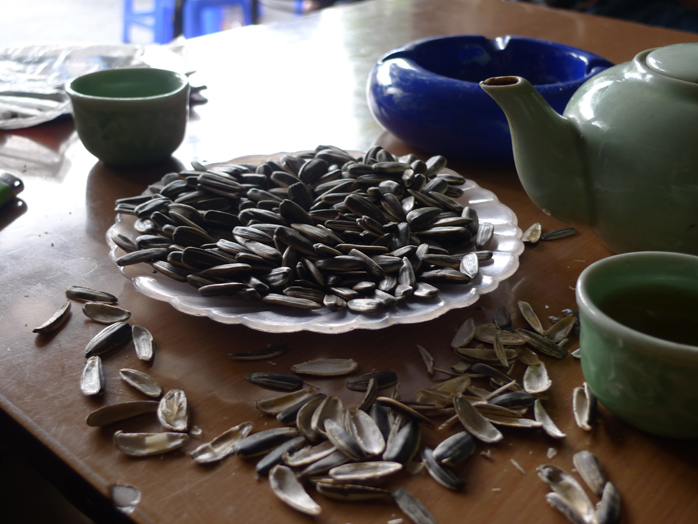
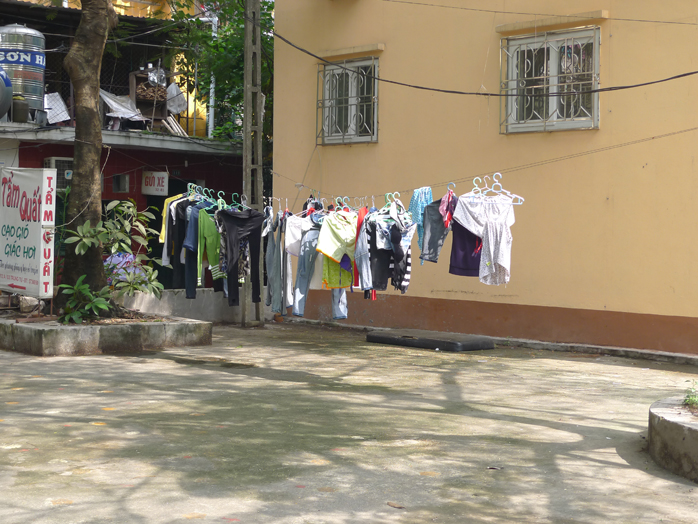
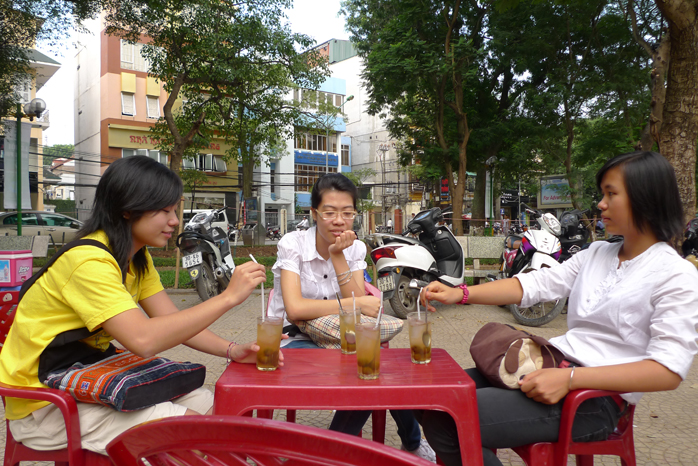
Three of the students participated in the listening project, 2011.10.7 Tran Binh Trong
exhibition "NOWHERE"
artist: Mamoru Okuno, Motoyuki Shitamichi, Tuan Mami
2011.10.29 − 11.20, The Japan Foundation Center for Culture Exchange in Vietnam, Hanoi, Vietnam
exhibition photo: Motoyuki Shitamichi
text on the booklet: Mizuki Takahashi, The Freedom to Say That "It Is Beautiful"
THE WAY I HEAR / HAY LANG NGHE, HANOI, 2011
2011, dimension variable
tin box, note books, ear plugs
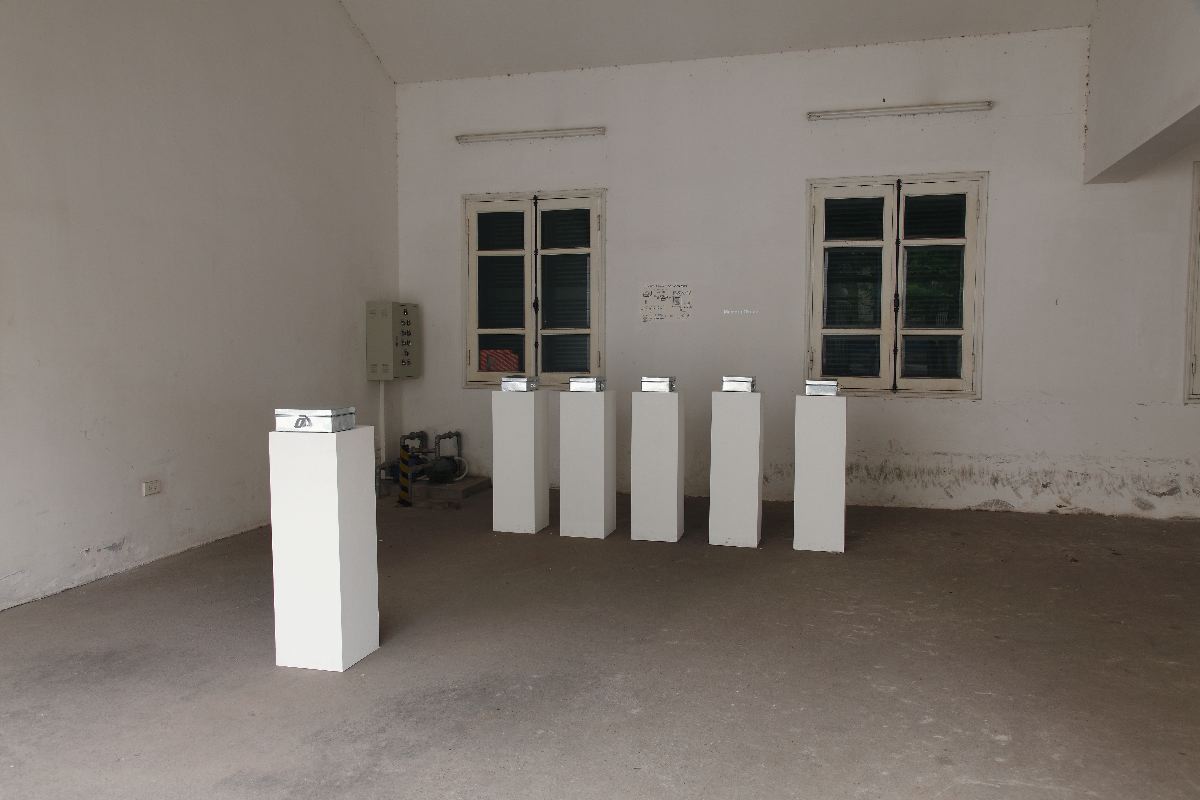
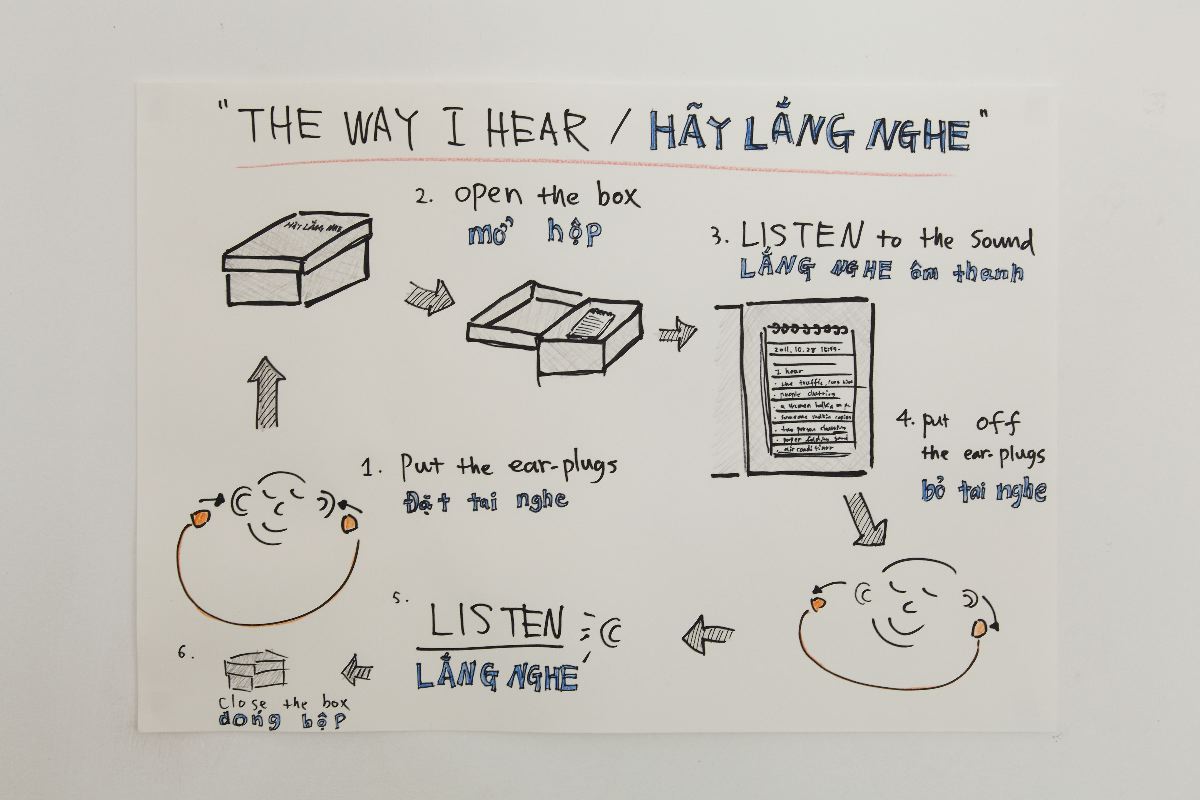

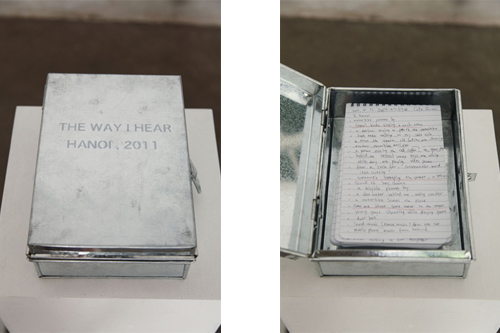
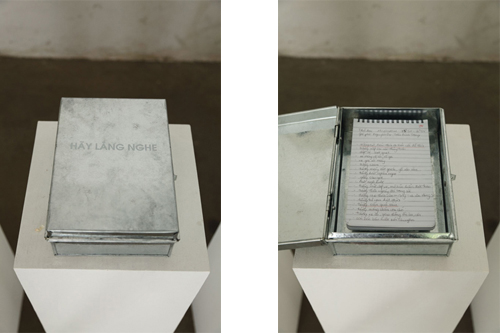

or go to related articles on my blog